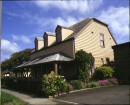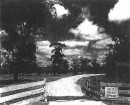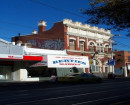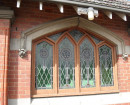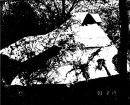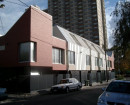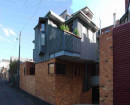RIFLE DOWNS
2029 DARTMOOR-HAMILTON ROAD, DIGBY, GLENELG SHIRE
-
Add to tour
You must log in to do that.
-
Share
-
Shortlist place
You must log in to do that.
- Download report


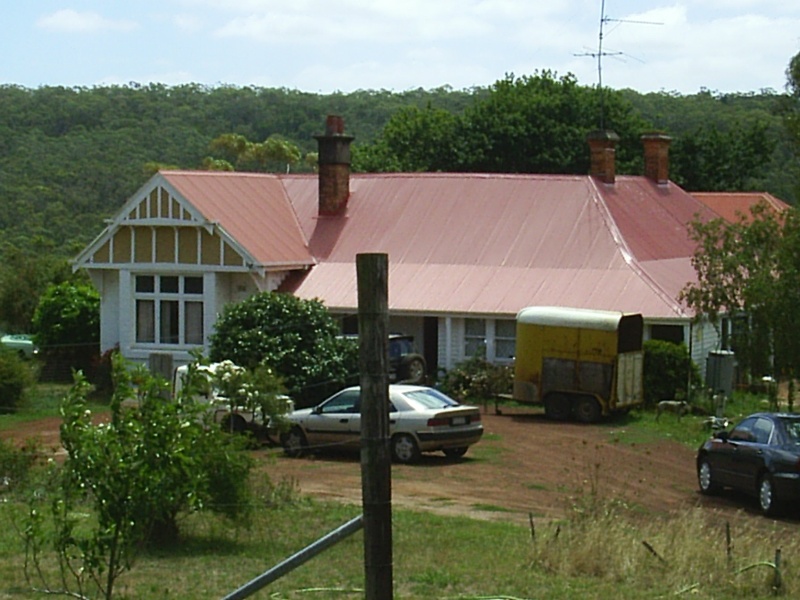
Statement of Significance
Rifle Downs Homestead overlooks the Stokes River and is located at 2029 Dartmoor-Digby Road, Digby approximately 7.5km south-west of Digby and 19.0km north-west of Dartmoor. Rifle Downs Station was taken up at first in 1847 by James Crawford, Scottish sheep farmer, and, after Crawford's death in 1848, was transferred in c1849 to Richard Lewis, publican and farmer. He owned the early 1840s Wool Pack Inn at Emu Creek (Digby) from 1842 to 1854, and was associated with a number of early pastoral properties during the 1840s and 1850s. The brick homestead with a verandah on three sides was constructed (or perhaps completed) for Lewis. His improvements to the property including the homestead, out offices, woolshed and stables, were valued at 1800 pounds in 1853 and at 5000 pounds in 1855. Although a simple colonial bungalow of six rooms, its aesthetic siting, practical planning, careful detailing and overall quality strongly suggest that it was designed by an architect. The Tasmanian architect, Samuel Jackson with his brother William, owned the nearby Sandford Station. Some materials must have been imported, probably through Van Diemen's Land including at least one Regency style marble mantelpiece, extensive cedar joinery and possibly much of the pit-sawn hardwood. Other materials, such as the bricks, must have been produced on the property. Lewis owned important horses, both as racehorses and stud draught horses, and he maintained a racecourse on Rifle Downs which would have complimented his role as a publican. He lost the property to his mortgagors and, in 1878, Captain John Philip took up the lease, establishing his son James Robertson Philip as manager who took over Rifle Downs in his own right in 1881. James and Margaret Philip abandoned Rifle Downs in 1891 as unviable because of fluke in the sheep and the deepening economic depression of the time. In 1893 the property was taken over by William McKay Shaw, of the McKay Sunshine Harvester family. He married Elsie Agnes McKenzie in 1907 and this triggered major alterations and additions, including the new dining room and rear wing. Other changes were made in the 1960s. The family still occupies the house which retains a high degree of integrity to its early twentieth century period and it is in good condition. The garden includes several significant trees and two Quercus robur, English Oaks still mark the beginning of the drive.
How is it Significant?
Rifle Downs Homestead is of historical and architectural significance to the State of Victoria and the Glenelg Shire.
Why is it Significant?
Rifle Downs Homestead is of historical significance for its association with James Crawford, Richard Lewis, James Robertson Philip and his family and subsequently the Shaw family. The homestead is of architectural significance as one of the best surviving examples of pre-1851 domestic architecture in a rural setting, especially notable for its internal late Georgian detailing and use of cavity brick construction, and for its subsequent alterations in 1907.
-
-
RIFLE DOWNS - Usage/Former Usage
grazing and farming
RIFLE DOWNS - Physical Description 1
Rifle Downs homestead is a modest eight-roomed, single storey brick dwelling. Later additions have changed the former symmetry of the facade and the original internal symmetry was broken by a narrow passage between the front and second room on the west side which led to the former detached kitchen wing and, possibly, other outbuildings. The main change was the addition in 1906 or 1907 of a brick dining room with a rectangular bay window, projecting slightly beyond the facade. The dwelling faces south on the entrance elevation, or facade, and east on the garden elevation. There was a timber post-supported verandah on at least three sides, remnants of which survive on the south and east elevations and possibly on the west. The verandah roof is contiguous with the main hipped roof. The roof is now clad with corrugated iron, painted red, but was originally shingled. Most of the shingles appear to have survived.
The brick walls are said to be cavity walls, with an external double skin and a single internal skin. The bricks are laid in a 'colonial' bond, i.e. three courses of stretcher bricks alternating with one course of header bricks. The bricks, which have smaller dimensions than usual, were almost certainly fired on the property. The bricks for the 1906/07 additions are known to have been fired on the property. The internal walls are also brick.
The surviving front window is a 12 paned, double-hung sash. There are three multi-paned French doors in the east elevation. The only surviving original window in the west elevation is a 12 paned, double-hung sash. There may have been French doors opening from the front room onto the western verandah. The external wall of the second room and its window were removed to create a new kitchen in the 1960s in this space and in the enclosed verandah. There is still access to a brick-lined cellar under the third room from this section of the verandah.
The front door is a conventional six-panelled door probably with the original knocker which has 'Rifle Downs' chased into the brass. There is a simple rectangular fanlight above the door. All of the doors in the front rooms are cedar and six-panelled including one in the 1906 dining room which appears to have been relocated. Some faces of these doors remain unpainted and have a soft polish finish. It is not known what timber was used for the French doors. Other cedar joinery includes cupboards and shelves beside chimney breasts in the second and third rooms on the east side of the house. The original mantelpieces in the two front rooms have been replaced with new timber mantelpieces in 1906. The mantelpiece in the third room is painted but almost certainly cedar and is typical of the late Regency period in its detailing. There is a white marble mantelpiece in the second room on the east side. This too is typical of the late Regency period with flat pilasters and a transom with simple roundels.
The floor joists and floor boards of the original house are all pit-sawn hardwood, the saw marks being visible from underneath in the cellar. The floorboards are butt-jointed and run north-south. At least in the third room on the east side there is clear evidence that the boards were laid to 'mirror' their graining. The skirting boards are simply detailed and typical of the late Regency period. The type of timber used is not known.
The ceilings are lime plaster on hand split hardwood lathes, which can be deduced from the missing ceiling in the second room on the west side. Hand run cornices and ceiling roses survive in the hall and some of the front rooms. The roses are simple roundels.
The dining room added in 1906/07 is typical of the period. Its main feature is the rectangular bay window with five tall casement lights and coloured glass lights above. The coloured glass is an abstract red floral motif. Above the window there is a half-timbered stepped gable. There is a large mantelpiece on the east wall, this chimney probably being new. The other chimneys were remodeled to match with bands of stucco added at the top. There is another small single room, possibly added in the 1920s off the west verandah. Another major wing was added in 1906 across the back of the original house which has its own hipped roof. The only other major alterations include the addition in the 1930s (or 1960s?) of a rectangular weatherboard bay with a triple sash window with diaper leadlight in the front room on the east side, a bathroom in the corner of the verandah, and alterations and extensions to the east to the 1906/07 rear wing.
Outside the south-west corner of the house there is a large covered circular brick-lined well, 6.0m deep and 5.2m in diameter, now covered by a corrugated iron roof. Opposite the front door is a small hexagonal timber garden pavilion with a corrugated iron roof. Some distance from the house on the west side there are large timber stables with traditional lattice windows.At the rear of the house there is a large oak with a DBH of at least 1.2m and a spread of at least 30.0m, which appears to be Quercus Robur. There is an Elm, Ulmus procera on the east side of the house. There are two Oaks, both Quercus robur on either side of the front gate on Dartmoor-Hamilton Road. The stumps of two conifers, almost certainly Pinus radiata, remain closer to the gate.
RIFLE DOWNS - Physical Conditions
The house is in good condition and retains a very high degree of integrity, notwithstanding the alterations in 1906, which are significant in their own right, and the alterations in the 1960s.
RIFLE DOWNS - Historical Australian Themes
3. Developing local, regional and national economies
3.5 Developing primary production
3.5.1 Grazing stock
3.5.3 Developing agricultural industries
5 Working
5.8 Working on the landHeritage Study and Grading
Glenelg - Glenelg Shire Heritage Study Part One
Author: Carlotta Kellaway, David Rhodes Mandy Jean
Year: 2002
Grading:Glenelg - Glenelg Heritage Study Stage Two (a)
Author: Heritage Matters
Year: 2006
Grading:
-
-
-
-
-
RIFLE DOWNS
 Glenelg Shire
Glenelg Shire
-
Archaeological site
 Southern Grampians Shire
Southern Grampians Shire -
Avoca
 Stonnington City H0809
Stonnington City H0809 -
BANYULE
 Victorian Heritage Register H0926
Victorian Heritage Register H0926
-
-



